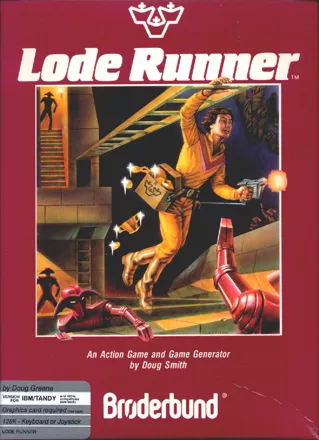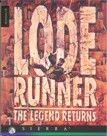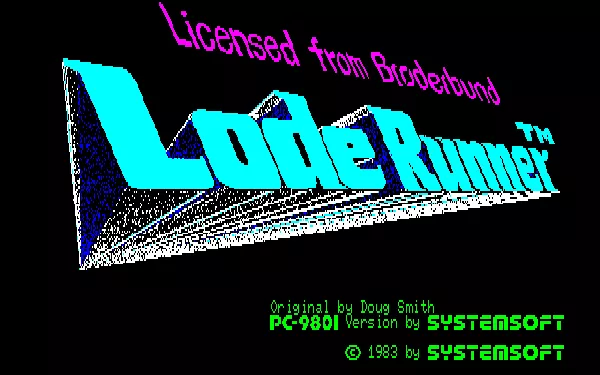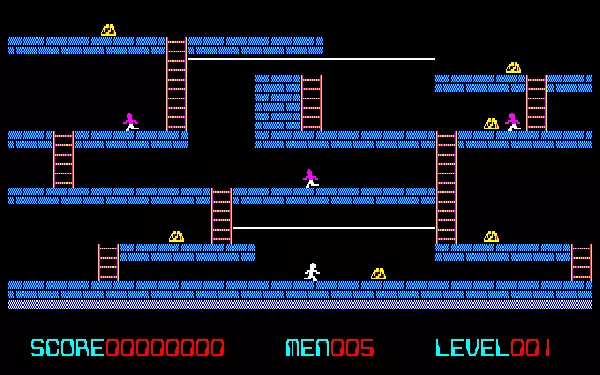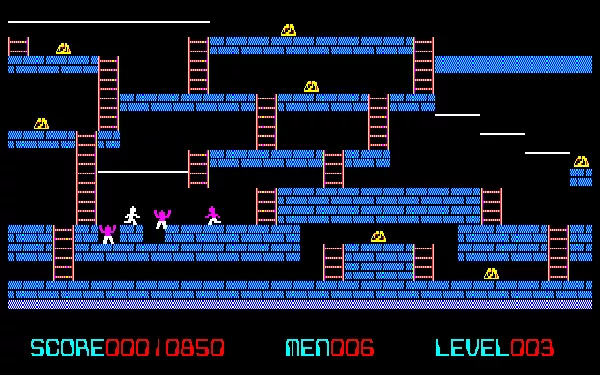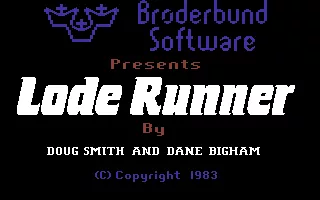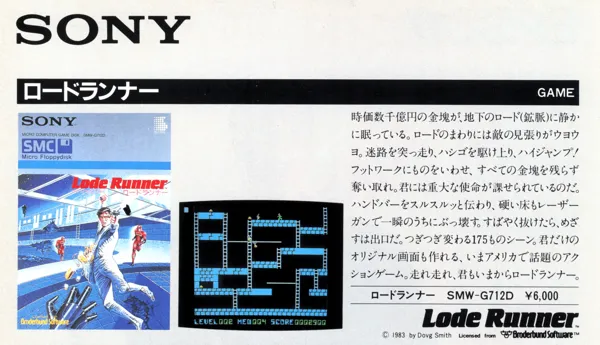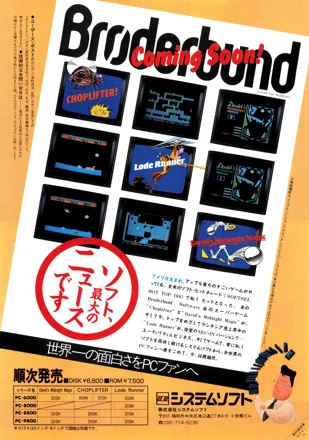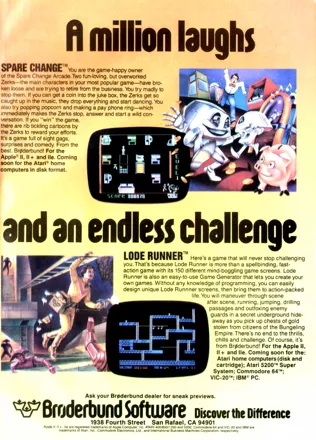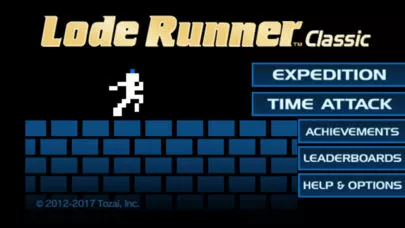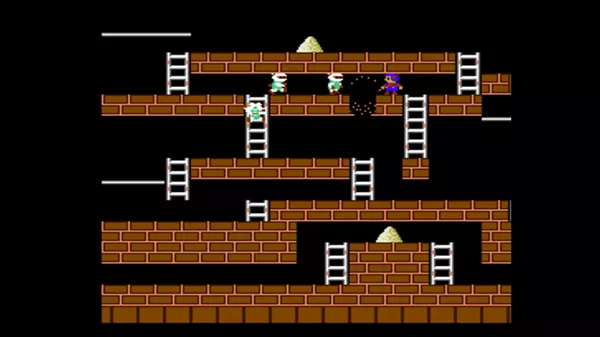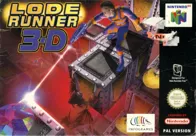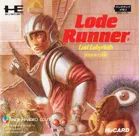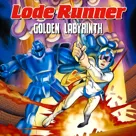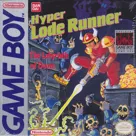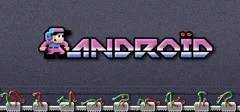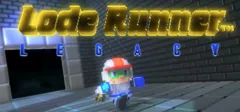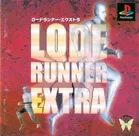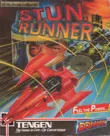Lode Runner
-
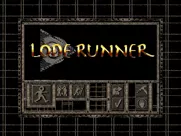 Lode Runner
(1994 on
Windows 16-bit)
Lode Runner
(1994 on
Windows 16-bit)
-
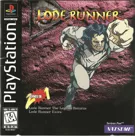 Lode Runner
(1998 on
PlayStation)
Lode Runner
(1998 on
PlayStation)
-
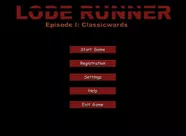 Lode Runner
(2006 on
Windows)
Lode Runner
(2006 on
Windows)
- Lode Runner (2006 on Nintendo DS)
-
 Lode Runner
(2009 on
Xbox 360, 2015 on
Xbox One)
Lode Runner
(2009 on
Xbox 360, 2015 on
Xbox One)
Description official descriptions
The Bungeling Empire has stolen a huge cache of gold from its rightful owners, and your mission is to infiltrate its treasury and recapture it. This entails progressing through 150 screens of platforms, ladders and ropes.
The Empire has sent robotic guards down to protect the gold, and contact with any of these will cost you a life. Your method of escaping them is to press fire to dig a hole in their line of movement, thus causing them to fall in briefly, allowing you to move across the gap safely. Once all the gold has been collected, a ladder allowing you to move onto the next screen is added. Completing these screens often requires forward planning and precision.
This was one of the earliest games to include a level editor, allowing the creation of new level designs with no programming skill.
Spellings
- ロードランナー - Japanese spelling
- 淘金者 - Simplified Chinese spelling
Groups +
Screenshots
Promos
Videos
See any errors or missing info for this game?
You can submit a correction, contribute trivia, add to a game group, add a related site or alternate title.
Credits (PC Booter version)
| Original Version | |
| PC Conversion | |
| Cover Artwork |
|
Reviews
Critics
Average score: 76% (based on 29 ratings)
Players
Average score: 3.7 out of 5 (based on 229 ratings with 6 reviews)
Another variant of the "ladder" theme with customizable levels.
The Good
Action was at the center of this game. While Big Top had a slow and dull pace, this one was more satisfying as you were able to fool the bad guys at will by trapping them in the holes you burned in the ground. Thus, instead of simply fleeing them, you were able to trap them. The action was fast enough considering the speed the good old 4.77 Mhz PC was able to offer.
Although a "ladder" game was nothing original back then, there was one special thing this game had: customizable levels. If you ever found that the 150 standard levels were not good enough, you were able to edit your own levels and save them on disk. This might not sound so hot today, but it was the first graphic game that I've personnaly been able to edit myself. This added a lot of pleasure and value.
The Bad
Alhough the game was not bad, it was yet another one based on ladders and small men running everywhere. As it has been the case with 3D shooters for many years now, this style of game have been used ad nauseam in the early 80s and it was harder and harder to be original. No wonder Pac-Man has been such a hit not long afterwards.
The Bottom Line
A traditionnal ladder-and-layer game where you must flee or trap bad guys coming to get you while collecting items that will let you enter the next level. What is particular with this one is the ability to "modify" the layers by burning holes through them (thus avoiding the ladders) and creating your own levels.
Sierra published a remake a few years ago which had full-blown graphics and music. I tried the demo and it was not bad, although I would have waited for the game to be in a bargain bin before buying it.
PC Booter · by Olivier Masse (443) · 1999
Pioneer in the editing mode...
The Good
NES' Lode Runner had nice graphics, gameplay and sound effects, and good musical theme. Like the PC Booter version, the NES one was addictive. It was one of the first games to feature built-in level editor, an edition mode which no requires programming knowledge. Besides Lode Runner, in 1980's first half, I know only Nintendo "programming" games (Excitebike, Mach Rider and Wrecking Crew, also for NES) had this feature, and they probably copied Lode Runner.
The Bad
Lode Runner is a bit harder, in any version of the game.
The Bottom Line
Lode Runner is a nice game, in any platform released. Get and try it, if you haven't played yet. If you have already played, get it too!
NES · by Gustavo Henrique dos Santos (97) · 2014
Landmark game in video game history!
The Good
This is the first game I can remember playing that successfully combined action and puzzle solving into a compelling experience. Some levels took seconds to solve, later ones minutes. Some I never solved more than once.
But most importantly, this game allowed users--kids like me--to create their own levels. Never before was such a facility included with a computer game before. It included the first true level editor, so players could create and play their own experiences. With the exception of Pinball Construction Set, I can remember no early home computer era game that allowed such a feature.
But even without the level editor, the game provided an addictive challenge despite the limitations of the early home computers.
The Bad
Some of the levels I thought were just too darn hard, especially so early on. The Apple II controls were a bit tricky to get the hang of, but they really couldn't have been implemented better. The Apple II joysticks just weren't great.
The Bottom Line
An addictive rush of treasure grabbing! Puzzle solving and action combined in an early game with lots of polish.
Apple II · by Frecklefoot (188) · 2007
Discussion
| Subject | By | Date |
|---|---|---|
| RIP Douglas Smith! | Pseudo_Intellectual (67779) | Sep 14, 2014 |
Trivia
1001 Video Games
Lode Runner appears in the book 1001 Video Games You Must Play Before You Die by General Editor Tony Mott.
Arcade version
The original Lode Runner proved so popular a coin-op version was commissioned and appeared in 1984 housed in its own cabinet and complete with artwork. However it contained only 99 levels instead of original 150 levels.
Bungelings
While they both spawned strings of sequels to lead series of their own, Lode Runner and Choplifter can be considered to share not just human sprite animation, but a "game world" along with Will Wright's Raid on Bungeling Bay. All three games (all published by Brøderbund) ultimately featured the militaristic denizens of the Bungeling Empire as the primary antagonists.
Cancelled ports
- Lode Runner was being ported to the Atari Lynx but was abandoned while in a fairly advanced state.
- An Amiga version is mentioned in the French manual, ported by Loriciels' Annecy studio, but beyond that, no information of an official Amiga port exists.
- A Dragon 32 port is advertised as "coming soon" in an ad in C&VG magazine. Presumably, it was cancelled at a late stage, since programmer Roy Coates, who converted Manic Miner and Jet Set Willy for Software Projects, later came out with Beanstalker on his own label.
Competition
One of the biggest ever Lode Runner competitions took place during Japan's World Fair in August 1985. Gameplay was shown on a massive Sony Jumbotron (then the world's largest television at 80x150 feet). Over 3,000 people entered from across Japan and only 50 were selected to try their luck at achieving the highest score within three minutes. 12 year old Yasutaka Fujii was proclaimed the winner.
Development
The development started in 1980 on Commodore PET with ASCII graphics. In 1981 the Doug Smith joined the University of Washington which had VAX computers in their lab, so he continued development there (together with James Steinbeck). When they decided to make it a commercial project, they used Smith's nephew as playtester. Because of his nagging, Smith ported to the game to Apple II; the platform it was eventually released first. Then Smith changed the name to Miner and bought off Steinbeck who could not afford the time for project anymore.
After a rejection by Brøderbund, he continued working on the game on his own money. He especially worked on refining the graphics and the controls. Then he offered it to four companies, Electronic Arts, Epyx, Sirius Software, and Brøderbund. Brøderbund offered him $10,000 and 23% of future profits and he actually rejected an offer of $100,000 without royalties.
When Brøderbund bought the game they demanded that it contain 150 levels. The creative solution Smith came up with was to give the kids in his neighbourhood the level designer, promising to pay each kid who make a good level. One of them was Daron Stinnett, the executive producer of several LucasArts games including Dark Forces and Outlaws.
Message
Strings found in the game code:
If the original MASTER disk fails to run, return it to Broderbund for replacement. COPIES WILL NOT WORK.Thanks for the run. See ya' next time.
Version differences
Lode Runner was enhanced for the Apple Macintosh (and packaged as such). It remains the only 16-bit version of the first game and has possibly the highest resolution at 512x342 pixels on a crisp monochrome display. This version also features added mouse support for in-game configuration within windows, pull-down menus, pop-up dialogue boxes, and level creation. The game itself is played using the keyboard.
Awards
- Computer Gaming World
- November 1996 (15th anniversary issue) - #80 on the “150 Best Games of All Time” list
- Game Informer
- August 2001 (Issue #100) - #52 in the "Top 100 Games of All Time" poll
Information also contributed by Игги Друге, Erez Schaz, Garcia, John Romero, PCGamer77 and FatherJack
Analytics
Related Sites +
-
Abandonia
for DOS, Windows: downloadable releases; additional material -
Atarimania (8-bit)
for Atari 8-bit: database; downloadable releases; artwork; additional material -
Atarimania (ST)
for Atari ST: database; downloadable releases; artwork; additional material -
CPC-Power (in French)
for Amstrad CPC: downloadable releases; artwork; additional material -
Game Base 64
for C64: Games, Database, Music, Emulation, Frontends, Reviews and Articles -
Golden Runner, a Golden Runner team remake
for Browser (not specified): online playable remake; additional material -
Lemon 64
for C64: games, reviews and music -
Lode Runner: Ancient History!
A history of Lode Runner and it's creator. -
MSX Generation
for MSX: catalogue; cover art; additional material -
Macintosh Garden, an abandonware games archive
for Macintosh: downloadable releases; manual; screenshots; reviews; artwork -
My Abandonware
for DOS and Mac, Amstrad CPC, Commodore 64: downloadable releases; online versions; additional material -
SMS Power!
for SG-1000: releases info; credits; box text; additional material -
The Games Archives
for BBC Micro and other platforms: downloadable releases -
The International Arcade Museum
extensive information about the arcade game machine -
Virtual Apple 2 - Online disk archive
for Apple II: online emulation of game (for Windows and Mac); downloadable releases; additional material -
World of Spectrum
for ZX Spectrum: downloadable releases; additional material; remakes links; player reviews; magazine references; magazine adverts
Identifiers +
Contribute
Are you familiar with this game? Help document and preserve this entry in video game history! If your contribution is approved, you will earn points and be credited as a contributor.
Contributors to this Entry
Game added by demonlord.
BBC Micro added by POMAH. Commodore 64, NES added by PCGamer77. Wii U added by Michael Cassidy. Sharp MZ-80K/700/800/1500, PC-6001, SMC-777, PC-8000, PC-98 added by Infernos. Apple II added by KnockStump. Atari ST added by PAO. SG-1000 added by Sciere. J2ME added by Hervé Piton. Windows Phone, iPhone, Sharp X1, Android, ZX Spectrum, WonderSwan added by Kabushi. Atari 8-bit added by Martin Smith. Wii added by gamewarrior. Arcade added by Pseudo_Intellectual. Antstream added by lights out party. PC-88, FM-7 added by Terok Nor. Amstrad CPC, VIC-20 added by Servo. MSX added by koffiepad. DOS added by wanner jean christophe. Macintosh added by Garcia. Sharp MZ-80B/2000/2500, Hitachi S1 added by Elliot Washington.
Additional contributors: Trixter, Unicorn Lynx, POMAH, Alaka, Opipeuter, Martin Smith, Pseudo_Intellectual, Игги Друге, Parf, vedder, Patrick Bregger, mailmanppa, Starbuck the Third, FatherJack, ZeTomes.
Game added August 23, 1999. Last modified February 1, 2025.


